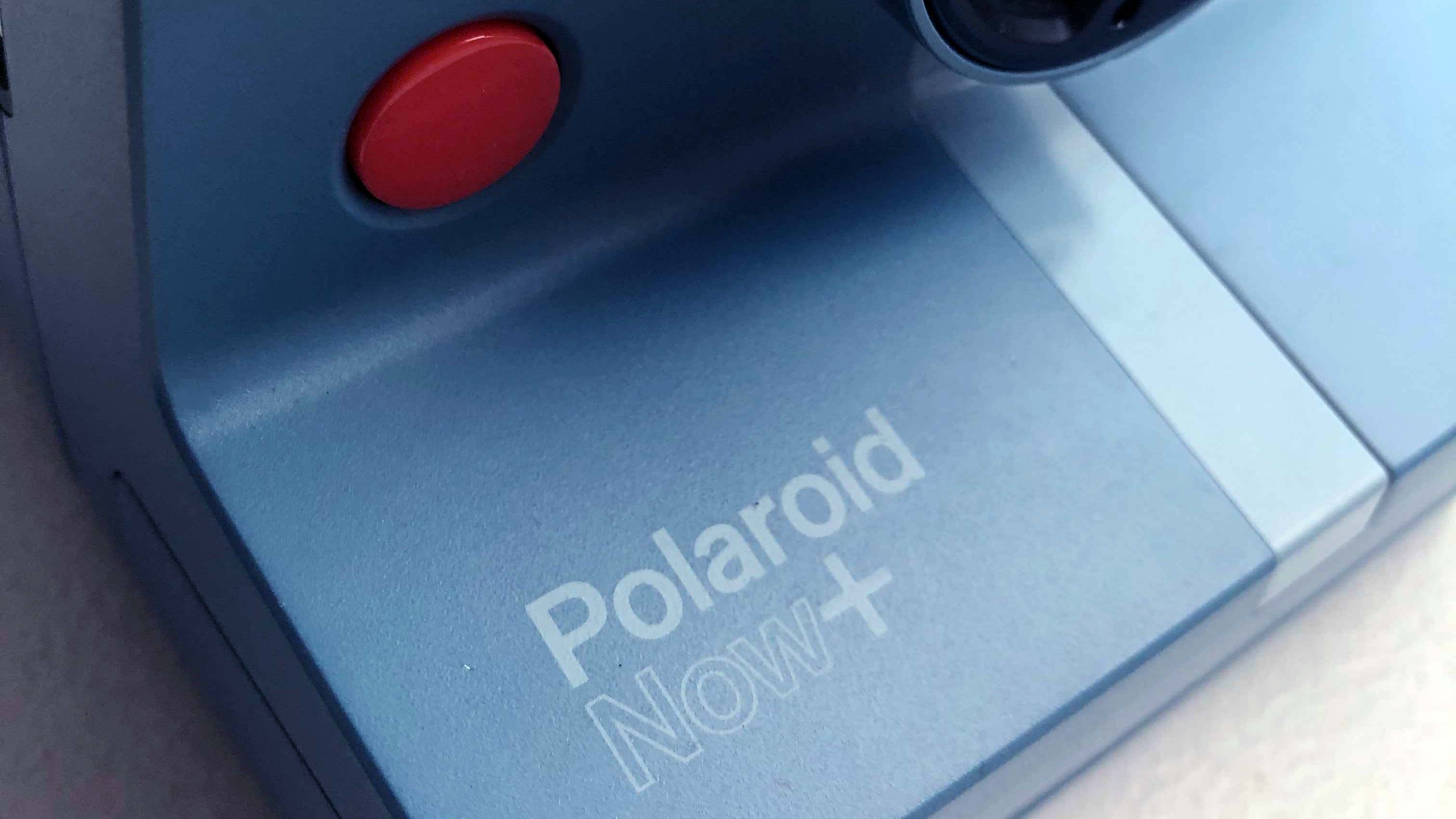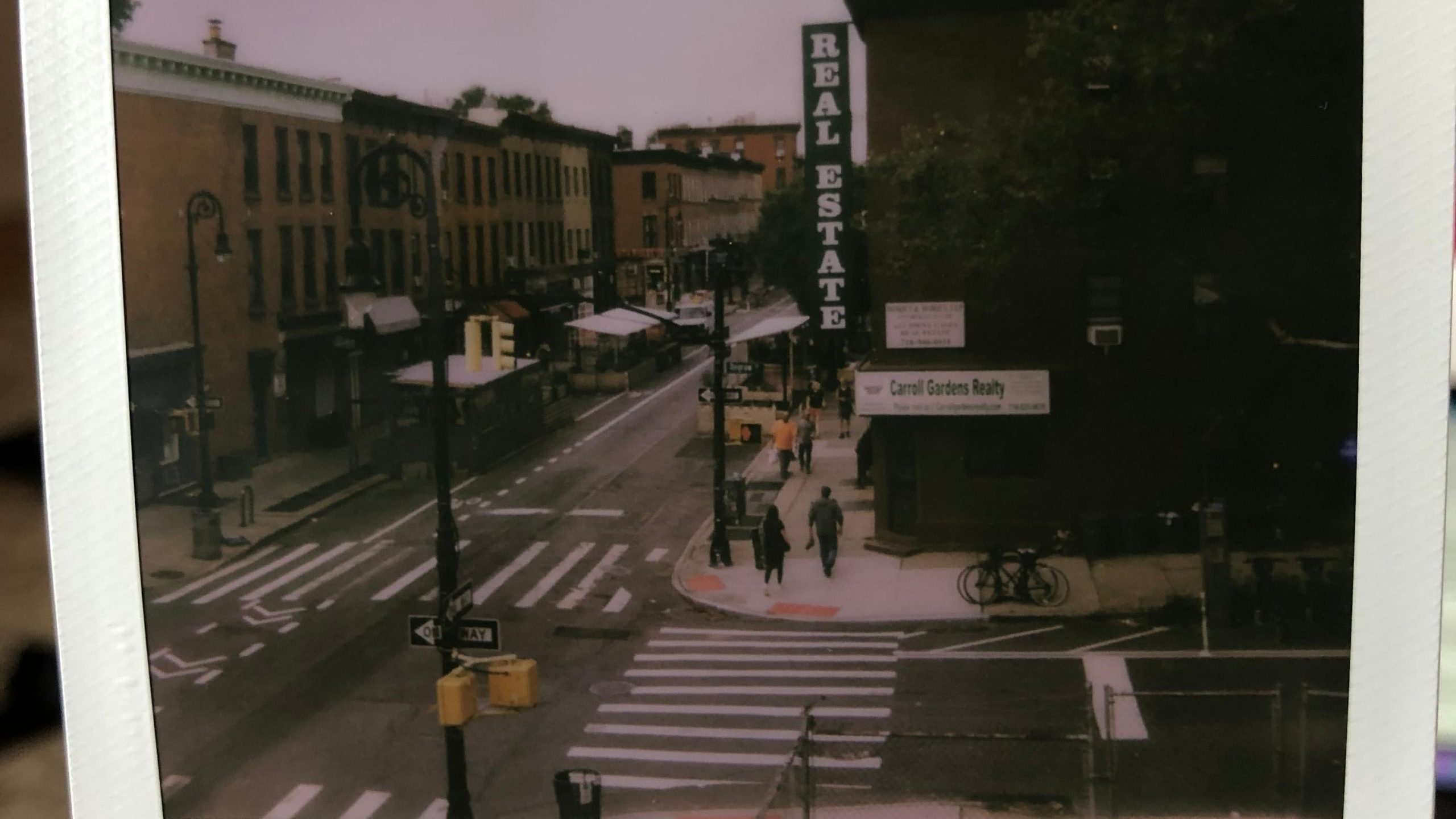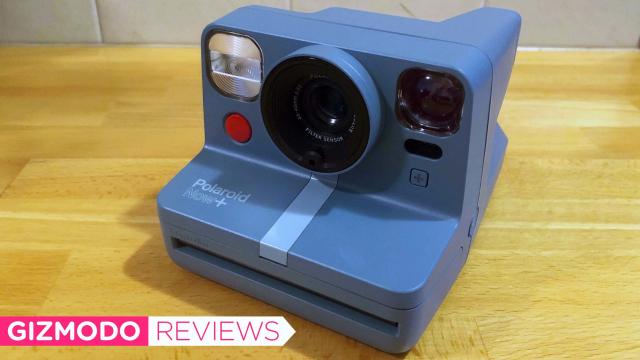The beauty of shooting on a Polaroid is that it’s idiot-proof: You point, you shoot, you wait a few minutes for your film to develop, you realise the photo came out blurry and weird because the lighting was bad, you take another photo. It’s an old-school ritual that’s stood the test of time for a reason, and more than a fraction of that reason is the simple, retro elegance of something that really is as easy to use as it looks.
With the new $US150 ($206) Polaroid Now+, Polaroid has once again tinkered with that time-honoured formula to make its famously intuitive camera a little bit more feature-rich, loading it up with new creative tools that boost the camera’s core functionality and allow savvy photographers greater remote creative control over the photos they produce. In other words, the camera that was once idiot-proof is now less so, which is great news for seasoned photogs and bad news for me, an idiot.

Polaroid Now+
What is it?
Polaroid's Bluetooth-enabled point-and-shoot camera with manual shooting controls
Price
$US150 ($206)
Like
App is easy to use, just like the camera; lightbulb icons at the top of each setting give users helpful tips for shooting
Don't like
I’m sorry, but the photo quality is just awful — but that’s an evergreen thing with Polaroid, it’s not specific to this camera
Editor’s Note: Stay tuned for local Australian pricing and availability.
Old-School Looks With New Capabilities
While the brand has made a few thoughtful tweaks to the camera’s body, simplicity and functionality is still Polaroid’s calling card. Physically, the Now+ still looks very similar to the brand’s original Polaroid OneStep from 1977, with a chunky polycarbonate and plastic body and a sloped back that makes pressing your eye to the viewfinder just difficult enough. The addition of a tiny “+” button just to the right of the lens makes it easy to turn on the self-timer and toggle between double exposure mode. Along with the traditional white and black colorways, Polaroid is also offering the Now+ in a sleek blue grey, which is the version I tested.
The Polaroid Now+ is the second major release from Polaroid this year, following the international launch of the Polaroid Go back in April. The main hallmark of the Now+ is that it features Bluetooth connectivity, with settings that can be adjusted remotely via Polaroid’s newly redesigned app. The closest cousin to the Now+ is the OneStep+, which Polaroid released in 2018 and which similarly offers a built-in double exposure mode and light painting mode, as well as manually adjustable aperture and shutter speed settings. New features include the addition of aperture priority settings and tripod mode, tools that allow for great freedom with depth of field and long exposures.
While the addition of Bluetooth still doesn’t mean users can preview their shots before they’re developed — or transfer their photos digitally, for that matter — the app grants photographers the ability to manually swipe through different creative settings, including light painting mode, portrait mode, double exposure, and manual mode. Unlike the OneStep+, the Now+ also offers dedicated tripod and aperture modes, which make shooting portraits a much more interesting, rich experience. The Now+ is also a step up from the point-and-shoot Now camera that Polaroid released in 2020, offering improved core features including autofocus, dynamic flash and self-timer.
More Manual Controls
While actual photographers will undoubtedly love these new additions, which essentially allow for greater creative freedom than anyone shooting on a Polaroid has ever had, there’s a real disconnect between the new features and the other type of person who wants to shoot on instant film: amateurs.

The allure of film is obvious; there’s a reason people still shell out for Polaroid and Instax cameras and then perch them suggestively on bookshelves and coffee tables at their New Year’s Eve parties. Waiting for a tiny frame to develop in real time is exciting and rewarding, and the photos — when and if they turn out — have an undeniable retro appeal. The intended effect of the new creative tools on the Now+ is that these memories will be captured in more striking detail, but in practice, having more buttons to press only creates an increased likelihood of mucking up the end result. That in and of itself might still be all well and good, were it not for the fact that the Now+ uses Polaroid’s signature i-Type film, which is still ridiculously expensive at $US16 ($22) a pack, or approximately $US2 ($3) a photo.
At $US2 ($3) a photo, it’s hard to comfortably justify messing up, say, six photos in a row because you wanted to “experiment” with the shutter speed. It’s not that more features are a bad thing, necessarily; on the contrary, the new tools are genuinely thoughtful, fun ways to play around with light and portraiture, and it’s obvious that Polaroid designed them in close consultation with its dedicated artist community. But for those outside of that artist community — the average photographer, if you will — this is an expensive camera with expensive film that will probably take you more than a few go-arounds to get working properly.
Less Than Desirable Results
Unlike any previous camera that Polaroid has released, the Now+ comes with five physical lens filters included, which allow users greater flexibility to experiment with moody lighting effects. In addition to blue, orange and yellow lenses, the new pack also includes a red lens with vignette effect and a starburst lens, which should ostensibly have the effect of refracting the existing light to create a radiant effect.
The lenses are a cute touch, but again, the main issue — at least for an amateur photographer — is that it’s already so damn hard to get a Polaroid to turn out under normal circumstances, in normal lighting conditions. Throwing a blue filter over your lens doesn’t really have the intended effect of altering the vibe of your photo as much as it has the effect of making an already blurry, low-quality image… bluer.
After hurricane-induced driving rains and gale force winds jeopardized our initial plans of testing the camera out at a friend’s birthday party across town, my friend consented to some glamor shots in my tiny Brooklyn with her dog. Even after messing around with the light settings, playing with the lens filters yielded surprisingly bad results — resulting in dark, grainy photos with troubling bleed lines that didn’t do much to adequately capture the moment.

Why I Wanted to Love This Camera
The blending of digital and analogue technology is new-ish for Polaroid, but not exactly surprising given the recent parallels to the brand’s own history. After trying — and failing — to reinvent itself as a digital brand in 2008, Polaroid announced that it planned to cease production of its instant film once and for all.
That’s when a company called the Impossible Project stepped in, leasing out Polaroid’s production facilities and stepping in to ensure that new instant film and analogue products remained in production. The Impossible Project did well — surprisingly well — and by 2017 the company’s largest shareholder announced that it had acquired the original Polaroid corporation to form a merged entity called Polaroid Originals. In 2020, that merger came full-circle when the resultant company rebranded a final time, changing its name back to just “Polaroid” and immediately setting itself to releasing an updated line of cameras with digital integrations.

It’s the kind of come-from-behind victory that makes you want to root for Polaroid, a brand so straightforward and guileless that it was already pretty easy to root for to begin with. The Polaroid Now+ is a cool little camera that was designed to maximise the creative potential of savvy users. I wanted to love it — I really did — but its high price point and even higher potential for human error make it not the ideal choice for a dumbass amateur photographer like myself. Analogue-loving pros might love all of the manual features, but at a certain point, you’d just be better off shooting on an SLR.
